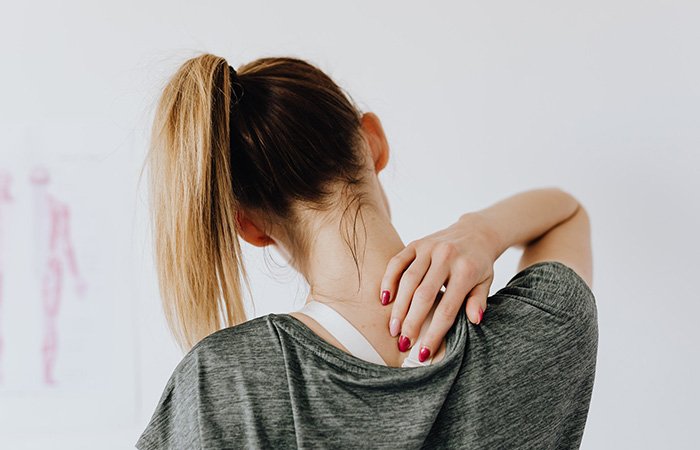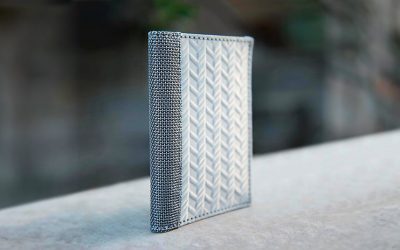Do Wallets Really Cause Back Pain?
The Ultimate Guide to ‘Fat Wallet Syndrome’
It’s long been said that large bulky wallets have the potential to cause unnecessary back pain over time. I often stumble across wallet brands bragging about how their wallets are so slim they eliminate these issues, but I’ve always been skeptical whether or not they’re talking out of their arse. Today, I’m going to look at the actual research, proven statistical research, into whether or not back pain, also called Wallet Sciatica, can be caused by a wallet.
So how would a wallet cause this sort of back or spine pain? The idea is simple, men like to store their wallets in a back pocket, and sit on them daily. But this causes an uneven sitting position as one side of your body will be tilted upwards due to the wallet. Over time, and the more you do this, it can begin to put considerable pressure on the back/spine ultimately leading to postural issues over time.
What the Research Shows…
The first article I stumbled across was published in 2018 by the PMC (US National Libary of Medicine. Titled) ‘Wallet Neuritis – An Example of Peripheral Sensitization’, the article goes into great detail regarding what they call ‘Wallet Neuritis’ or ‘Fat Wallet Syndrome’ which is a fancy (or not so fancy) way of describing the potential issues of the continued strain of the back or spine due to a larger wallet.
The article is very detailed at looks at case studies of 3 different men all of which have reported issues with back pain and long-term use of sitting on large wallets. In the case of one male, a 37-year-old Doctor, reported severe pain. It was uncovered the Doctor had habituated to use a ‘2 cm × 9 cm × 12 cm’ sized wallet; and further screening revealed, that stuffed with visa cards, visiting cards, scraps of paper, receipts of purchase, making it bulky enough to generate substantial pressure on the ipsilateral gluteal region. The conclusion from the study:
‘long-standing use of rear pocket wallet may compress and sensitize ipsilateral sciatic nerve, generating features resembling lumbago sciatica; thereby, remains a source of patients’ misery and diagnostic illusion for pain physicians as well’. – Md Abu Bakar Siddiq, et al.
Another research study published in 2014 titled ‘The Effect of Wallet Thickness on Spine Posture, Seat Interface Pressure, and Perceived Discomfort During Sitting’ explores a similar hypothesis but goes into more detail regarding the ‘Occupational’ side, or occupational sitting where they look at instances where people’s desk or sedentary jobs influence or perpetuate the issue. In a nutshell, their conclusion is very similar to the previous study with the following conclusions made.
‘Sitting on wallets greater than 32 mm in thickness increased gluteal discomfort reporting after short duration exposures. Asymmetrical sitting promotes non-neutral spine postures and reduces seat pan contact area. Asymmetrical sitting is therefore not recommended, even for short duration exposures.’ – Daniel Viggiani, et al.
What can we learn from this?
In essence, it’s clear from the studies we’ve looked at that there is a positive correlation between large wallets and spinal issues. One researcher said it only takes a wallet the size of just ‘28 mm × 37 mm’ was enough to considerably increase your chances of generating Wallet Sciatica overtime. This was again echoed with the other study suggesting wallet thicknesses of 22 mm and thicker could cause the same results.
But with all this being said, does size really matter? The main issue here seems to be storing a wallet in your back pocket. Where sitting down will rise one half of your body creating a distortion in the spine. Having your wallet in a front pocket immediately eliminates this issue meaning it doesn’t really matter the size, but more where you store it. That being said, there’s a reason why people prefer to store a wallet in a back pocket. They generally tend to be larger and more comfortable for larger bi-fold style wallets. This could easily be solved by storing your wallet in a different pocket, or simply removing the wallet from your back pocket before you sit down.
Best Wallets to Prevent Wallet Sciatica
Smaller more minimalist sized wallets, preferably thin in size are best when it comes to reducing the chances of suffering from wallet induced back pain. Again, it’s best to not carry your wallet in a back pocket and definitely don’t sit on it for any extended periods of time. Below we’ve suggested a few wallets that are thin in size and great for tackling this issue. You can also check out our article on ‘the best ultra-thin wallets’ that also has some great choices.
E8 Elephant Wallet: A ultra-thin elastic wallet. The thin material makes this wallet before for people who don’t carry much. It’s lightweight, durable, and can never get large enough to cause any issues.
Big Skinny Wallet: A brand built on the idea of slimming your EDC and preventing any sort of issues. The wallets are standard bi-fold style but has great built quality and great affordable prices.
Andar Freeman Wallet: Made from crazy horse leather, the Andar is ultra-thin and doesn’t bulk out due to ‘card stuffing’. It’s an affordable price and amazing quality.
Trove Wallet: A combination of leather and Elastic the Trove is versatile in its functionality and available in a huge selection of designs to choose from (color options).
Tesla Wallet: Discover Wallets fit for a Telsa Owner
We ask the simple question: ‘If Telsa made a wallet, what would it look like’? We explore the various options on the market in 2023.
Messi Wallet: An Ekster Collaboration
We take a closer look at the new collaboration between wallet brand Ekster and the legendry soccer player Messi.
Steel Mesh Wallet: A Look back
We take a look at the steel mesh wallet (stainless steel) and look at its history, legacy, and why it failed in the market.




